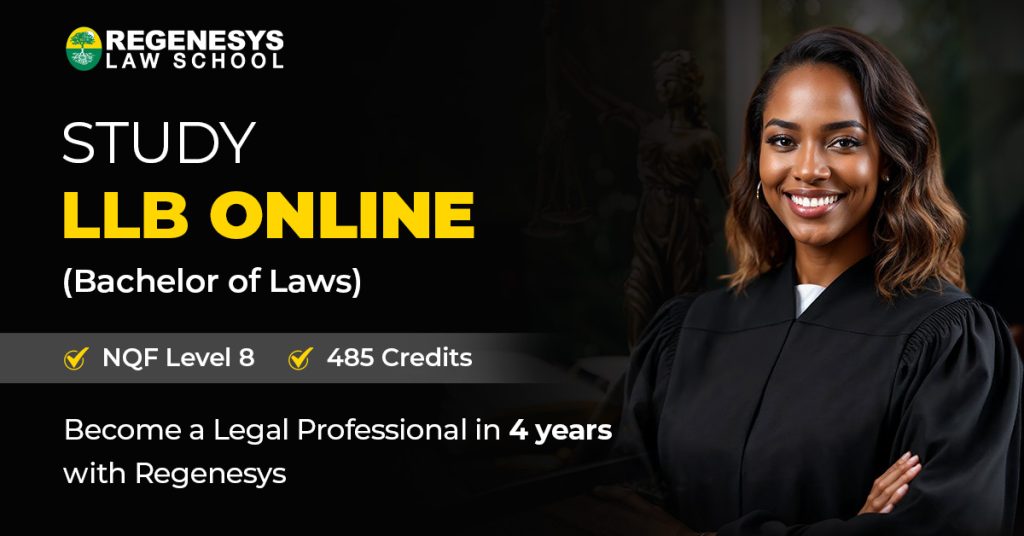Starting a learnership in South Africa can significantly improve your career. Learnerships combine classroom learning with hands-on experience. This combination helps you develop valuable skills and gain exposure in your field.
Whether you just finished school or want to make a career change, knowing how to apply is important. This blog will explain the key steps to apply for a learnership for everyone who seeks the answer to how to apply for learnership. You will learn how to research available options and submit a strong application. Get ready to discover new opportunities and begin your professional journey!
Table of Contents
- Understanding Learnerships in South Africa
- Importance of Learnerships for Career Development
- Eligibility Criteria for Learnerships
- Preparing Your Application
- How to Apply for a Learnership?
- How to Apply for a Learnership Online?
- How to Apply for a Learnership via Email?
- Writing an Effective Application Letter
- How to Apply for a Learnership in South Africa? FAQs
Understanding Learnerships in South Africa
Starting a learnership in South Africa can boost your career. Learnerships mix classroom learning with real work experience. This combination helps you build important skills and gain experience in your field. Whether you have just finished school or want to change careers, it’s important to know how to apply. This blog will explain the main steps to apply for a learnership. You will learn how to find available options and submit a strong application. Get ready to explore new opportunities and kickstart your professional journey!
This is why it is important to understand how to apply for learnership in SA.

Importance of Learnerships for Career Development
Learnerships are crucial for career development in South Africa. They provide the skills needed to find work and succeed in your career. By participating in a learnership, you gain valuable knowledge and experience that can help you in future job applications. Many employers prefer candidates who have completed learnerships because they are familiar with the workplace environment.
Read more:What are Learnerships Without Matric in South Africa?
Eligibility Criteria for Learnerships
Learnerships are programs that mix classroom learning with real work experience. To qualify, you need to meet certain criteria, which can differ depending on the organization and field. These criteria help ensure that applicants have the right skills, qualifications, and commitment to do well in their studies or careers.
General Requirements for Applicants
You must have a Grade 12 (Matric) certificate or something similar to show your educational background. A strong interest in the field and good communication skills are important. You should also have a positive attitude, be adaptable, and be eager to learn new skills. These traits help you meet both academic and work-related challenges.
Specific Qualifications Needed
The qualifications needed depend on the type of learnership. For example, engineering learnerships often require Mathematics and Science, while healthcare programs may require Life Sciences. Each program has different requirements, so check the eligibility criteria for your chosen learnership to make sure you meet all the academic and field-specific needs.
Age and Citizenship Requirements
Learnerships usually target South African citizens or permanent residents aged 18 to 35. This focus helps promote job opportunities for young people. If you are not a citizen or fall outside this age range, check with the organization offering the learnership to see if there are exceptions to these rules.
Preparing Your Application
Preparing Your Application for a Learnership is a crucial step to ensure you stand out among other applicants. Here’s how to get ready:
1. Gathering Necessary Documentation
Knowing how to apply for learnership online involves submitting required documents through the employer’s website or via email, depending on the application process. Before you start your application, gather all the documents you need. This often includes:
- A certified copy of your ID.
- Your Grade 12 certificate or any other relevant qualifications.
- A CV that lists your skills and experience.
- Any reference letters from past employers or teachers.
2. Creating a Professional CV
Your CV is an essential part of your application. It should be well-organised, clear, and to the point. Include your contact details, educational background, work experience, and relevant skills. Make sure to adjust your CV for each learnership, focusing on experiences related to the role.
3. Writing a Compelling Application Letter
An application letter is your chance to stand out. It should be addressed to the right person and explain why you are interested in the learnership. Highlight your skills and experiences that make you a strong candidate. Keep the letter short and ensure it is free from mistakes.
Read More: What are the Available Learnerships for 2024?

How to Apply for a Learnership?
Applying for a learnership involves a few important steps. First, look for programs that match your skills and interests. Next, collect the required documents, such as a certified copy of your ID, your CV, and your qualifications. Fill out the application form carefully and submit it before the deadline. Be sure to follow the instructions given by the organization. Lets understand each one by one:
1. Steps to Apply for Learnerships
- Research Opportunities: Look for learnerships that match your skills. You can find these on websites, social media, or job fairs.
- Prepare Documents: Make sure you have all necessary documents ready for submission. How to apply for learnership effectively can be enhanced by crafting a strong cover letter that highlights your enthusiasm and qualifications for the specific role you’re seeking.
- Submit Your Application: Follow the instructions provided by the organisation to apply for learnership.
- Follow-Up: If you are still waiting to hear back in a few weeks, consider following up on your application.
2. Common Mistakes to Avoid
- Generic Applications: Tailor your application for each learnership. Sending the same CV and letter to multiple companies can hurt your chances.
- Ignoring Instructions: Always follow the application guidelines. Please do so to avoid your application being rejected.
- Late Submissions: Be mindful of deadlines. Ensure your application is submitted on time.
How to Apply for a Learnership Online?
To understand how to apply for learnership, you should familiarize yourself with the specific requirements of each program and follow the application guidelines carefully. Many organizations let candidates submit their applications digitally, so you can apply from anywhere. It is important to be professional and accurate in your application. Online platforms also let you track your application updates easily, making it more accessible.
Finding Learnerships Online
Many organizations post learnerships on online job portals. Good websites to start your search include PNet, CareerJunction, and JobMail. Create a profile, upload your CV, and set up job alerts to get the latest learnership opportunities in your field.
Filling Out Online Applications
When you apply for a learnership, it’s essential to fill out the online application forms correctly. Make sure you complete all required fields with the right details. Before submitting, review your application for any spelling or grammar mistakes, as these can hurt your chances of being selected.
Uploading Important Documents
Submitting the necessary documents online is an important step in the learnership application process. Ensure your CV, ID, and other required files are in the right format, like PDF or DOC. Avoid using large files, as some systems have size limits. Also, make sure that all uploads are clear and easy to read.
Read more:Learnership vs. Apprenticeship: The Differences
How to Apply for a Learnership via Email?
Exploring how to apply for learnership via email, take a professional approach. First, find the correct email address for the organization. Write a clear and brief email that shows your interest in the learnership. Always follow any special instructions in the job posting to complete your application.
1. Crafting a Professional Email
Start your email with a clear subject line, like “Application for Learnership – [Your Name].” In the body of the email, briefly introduce yourself and explain why you are interested in the position. Make sure to mention the specific learnership you want, and keep your tone formal and polite.
2. Attaching Necessary Documents
Before you send your email, attach the required documents, like your CV and cover letter. Name the files clearly, such as “CV_YourName.pdf” and “CoverLetter_YourName.pdf,” so they are easy to identify. Use accepted formats, like PDF or Word, and keep the file sizes small for easy downloading. How to apply for learnership programs requires careful attention to detail, including preparing your CV and ensuring you meet the eligibility criteria set by the organization.
3. Email Etiquette and Follow-Up
Keep a professional tone when you write your email. Use greetings like “Dear [Hiring Manager’s Name],” and close with “Kind regards” or “Sincerely.” After you send your application, follow up in one to two weeks to show your continued interest and ask about your application status.
Writing an Effective Application Letter
The most important part in understanding how to apply for learnership is the art of writing a compelling application letter. Lets understand below how to do it.
Structure of an Application Letter
- Header: Include your contact information and the date.
- Recipient’s Information: Add the recipient’s name and company details.
- Salutation: Use a formal greeting, such as “Dear [Recipient’s Name].”
- Introduction: State why you are writing.
- Body: Talk about your qualifications and why you are a good fit.
- Conclusion: Thank them for considering your application and mentioning your interview availability.
- Signature: Close with a formal sign-off, like “Sincerely,” followed by your name.
Tips for Writing a Strong Application Letter
- Be Concise: Keep your letter to one page.
- Show Enthusiasm: Let your interest in the learnership shine through.
- Use Positive Language: Focus on what you bring to the table.
Learning how to apply for a learnership in South Africa can open many doors for your career. Following the steps outlined in this article will improve your chances of success. Remember to tailor your application for each opportunity and for learnership programmes that genuinely fit your skills and interests. Whether you apply for learnership online or through email, being organised and professional is critical. Determining and preparing can secure a learnership that will boost your career. Good luck with your application!
Check out Regenesys’ Reginsights page for the latest educational materials!

How to Apply for a Learnership in South Africa? FAQs
What industries offer the most learnership opportunities in South Africa?
Many learnership opportunities are available in industries like engineering, finance, IT, and healthcare, where skilled workers are in high demand.
Can I apply for multiple learnerships at the same time?
You can apply for learnerships simultaneously but customise each application for the specific role and company.
How do I prepare for an interview after applying for a learnership?
To prepare for an interview, research the company, understand the learnership role, and practice common interview questions.
Are learnerships paid, and what can I expect in terms of money?
Most learnerships are paid, with stipends or salaries that vary depending on the industry and the specific programme.
What if I need to be accepted into a learnership?
If you are not accepted, ask for feedback to improve your next application and look for other training or job opportunities.
Is there an age limit for applying for learnerships?
While many learnerships are for younger people, some companies may accept older applicants depending on their rules.
How are learnerships different from internships in South Africa?
Learnerships are formal programmes that combine work and study and lead to a qualification, while internships mainly focus on gaining work experience without a qualification.








